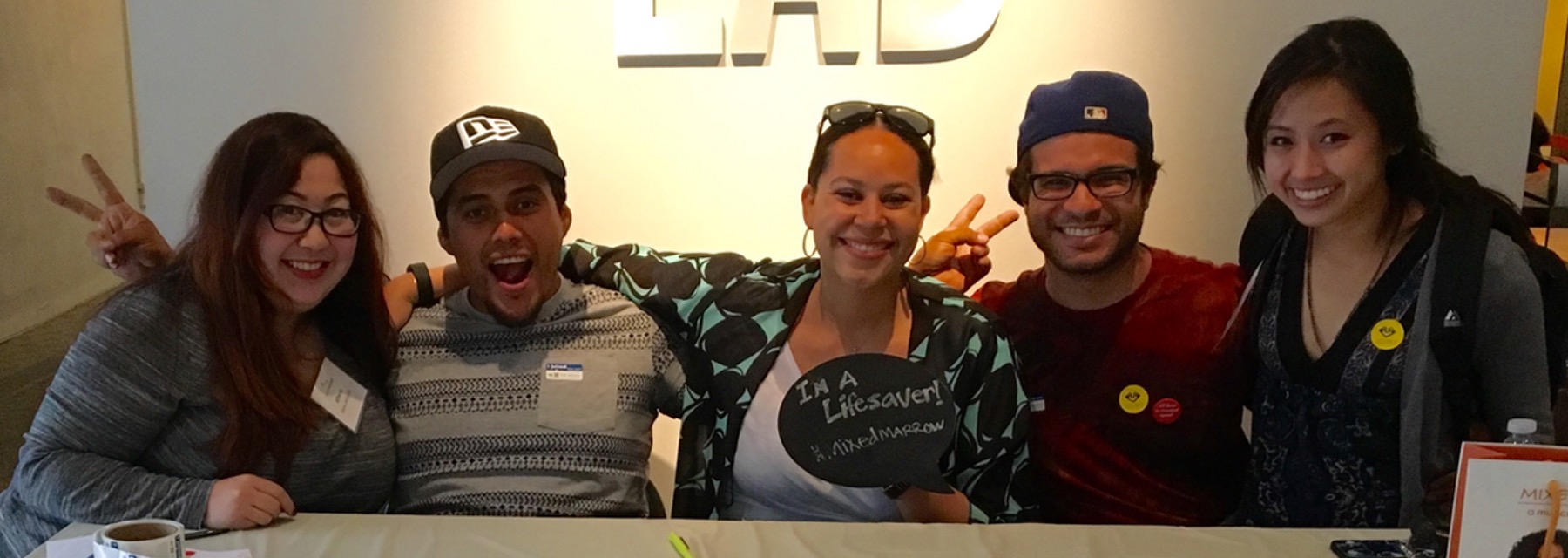Information & Statistics
Information & Statistics
2017

***In 2010, more than 65,000 – or 9 percent – of potential donors who joined the Be The Match Registry identified themselves as multiple race. So we are definitely getting there slowly!!
- Every year, over 30,000 people are diagnosed in the US with life threatening blood diseases like leukemia. For many patients, a bone marrow transplant is their only chance at survival. Only 30% of patients find matching donors within their families. The remaining 70% must search for an unrelated donor.
- On US’s national Be The Match Registry, a total of 30% of donors are minorities and 3% of potential donors self-identify as mixed race. Though this approximately matches U.S. Census data, more mixed-race donors are needed given the sheer genetic diversity of the group.
- Human leukocyte antigen (HLA) typing is used to match patients and donors for marrow or cord blood transplants. HLA are proteins — or markers — found on most cells in the body. A person’s immune system uses these markers to recognize which cells belong in the body and which do not.
- A close match between a patient’s HLA markers and a donor’s can reduce the risk that a patient’s immune cells will attack the donor’s cells or that the donor’s immune cells will attack the patient’s body after the transplant. Everyone inherits six major pairs of HLA markers from their parents, half of each pair from their fathers, the other half from their mothers.
- Even with full-blooded siblings, the possible combinations of HLA-antigens make the chance of a match about 35%.
- Because tissue type is inherited, patients are most likely to match someone of their same race or ethnicity.
- A patient’s likelihood of having a donor on the Be The Match Registry who is willing and able to help save a life is estimated to range from 66 percent to 93 percent, depending on race or ethnicity.
- The NMDP (National Marrow Donor Program) is not able to break down the likelihood of finding a match for patients of mixed heritage. However, the challenge for finding a match is probably greatest in this growing community of racially and ethnically diverse people because the tissue type is very complex. The chance that two people from two different groups will create a new tissue type in children is very high. This is why there is such a great need for donors from all backgrounds to join the Be The Match Registry – to increase the likelihood that all patients will find a match.
Donation ProcessThere are three types of donations that can help patients with blood diseases– bone marrow donation, peripheral blood cell donation (PBSC) and umbilical cord blood donation. - About 76 percent of the time, a patient’s doctor requests a peripheral blood stem cell
(PBSC) donation, a non-surgical, outpatient procedure similar to donating platelets or
plasma. - About 24 percent of the time, a patient’s doctor requests marrow, a surgical, outpatient
procedure that takes place at a hospital. General or regional anesthesia is always used. - A third source of cells used in transplants is cord blood, which is collected from the umbilical
cord and placenta immediately after a baby is born. It is stored at a public cord blood bank
and the cord blood unit is listed on the Be The Match Registry. Expectant parents can visit
BeTheMatch.org/cord for more information. There is no cost for parents to donate cord blood.For bone marrow donation and PBSC donation, the donor must be of 18-44 years of age if donating in the US.







Pingback: The Struggle to Find Donors for Mixed-Race Children | On the Pulse
Pingback: Our Kids Are Becoming More Racially Diverse, But Our Cancer Treatments Aren’t Keeping Up – JumpSeek
Pingback: Our Kids Are Becoming More Racially Diverse, But Our Cancer Treatments Aren't Keeping Up | Care2 Causes
Pingback: Our Kids Are Becoming More Racially Diverse, But Our Cancer Treatments Aren’t Keeping Up